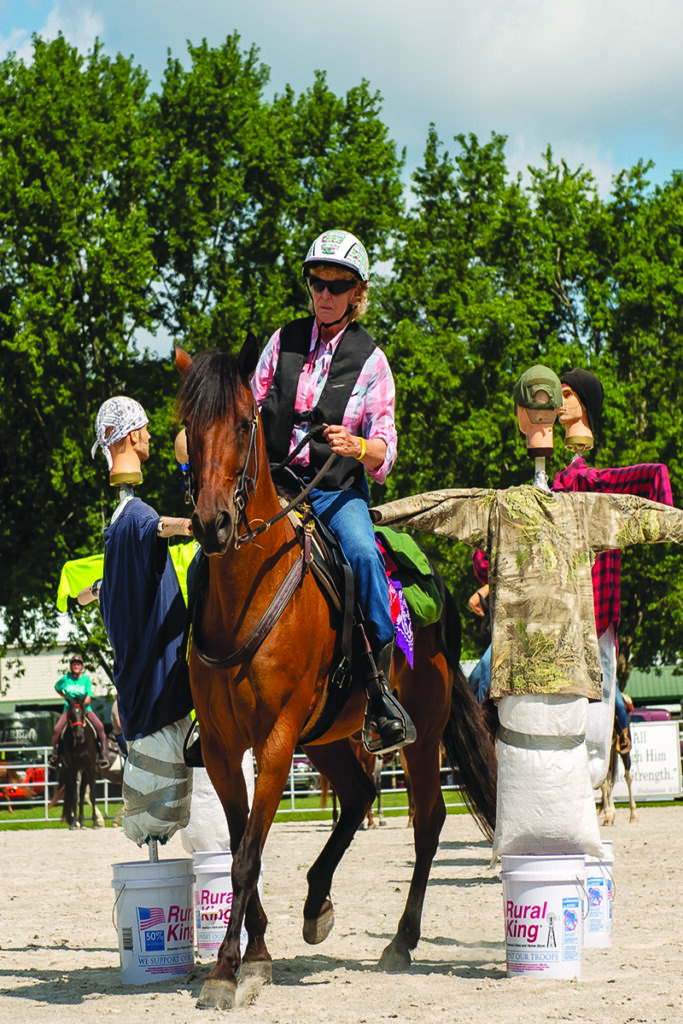
A car traveling too fast approaches two women and their horses who are riding along a road on their way to a trailhead. They turn and motion to the driver to slow down. Instead, he passes them so closely he grazes the stirrup of one rider, and she yells her disapproval. The driver ends up chasing them off-road in his car and only breaks pursuit when the ladies seek help from people at a campsite. Equestrian self-defense could prevent harm and even save lives in a situation like this.
Being Proactive with Equestrian Self-Defense
These and similar situations have actually happened to equestrians across North America. Longtime horseman and Johnson County, Ind., Sheriff’s Office deputy Brett Davis realized that there was a need for mounted self-defense and survival skills training for equestrians. In 2020, he and wife Raquel launched their Trail Safe Mounted Self-Defense and Safety Course. In less than a year, they’ve had numerous requests for classes from equestrian facilities and clubs across the U.S.
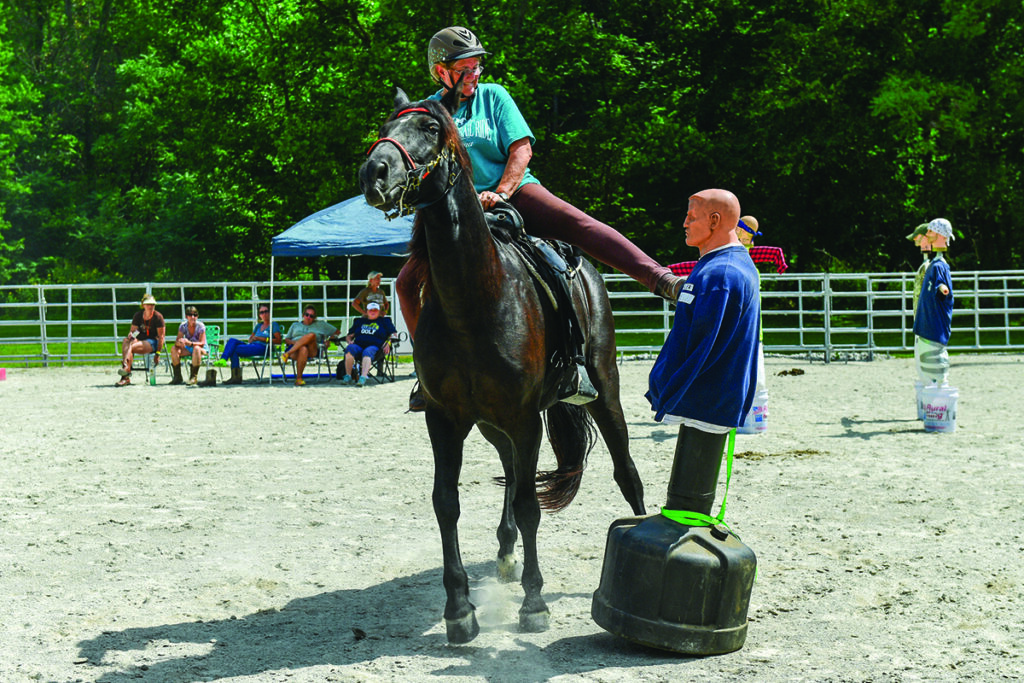
“Over years of dealing with people and horses, I’ve heard a lot of stories of people running into bad situations out on the trail,” says Davis. “An example was a person trying to pull a rider off their horse during a confrontation. I thought it would be good to put together a course to teach people how to act in situations like that to protect themselves as well as their horses.”
While his course has no official affiliation with his law-enforcement job, Davis feels that people will benefit from his equestrian self-defense experience in both police work and the horse industry. The four-hour course, about half classroom lecture and half work on horseback, stresses awareness of surroundings and preparedness. He encourages riders to adopt a self-preservation “warrior” mindset.
While Davis emphasizes that he doesn’t want people to think that there are bad things happening out on the trails all of the time, he wants to teach them how to deal with dangerous situations should they happen.
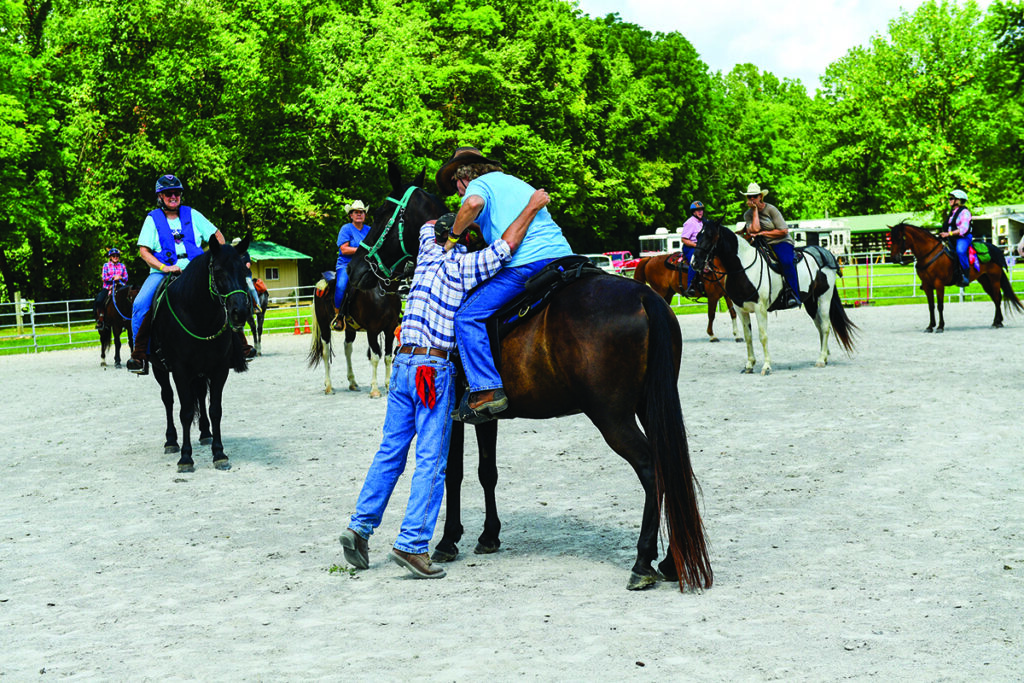
The class is not about teaching people to fight, but rather what to do in these events—how to position their horse if a dangerous person approaches, how to defend themselves, and how to get help—plus some basic first-aid and search and rescue tips. He also covers some items that riders may already be carrying that can be used as makeshift weapons.
Situational Awareness
Davis preaches situational awareness, saying it is an integral part of police work, but it’s vitally important for equestrians, too. He advises that on arrival at a location, riders should take note of all that is happening around them. Look for potential natural and manmade hazards at campsites, in parking areas and along trails and roads. Also, watch for wildlife.
Consider these questions and similar ones:
◆ How many and what types of vehicles are parked in the lot at the head of a trail, in the campground, or passing by on the road?
◆ Are there people acting strangely near me and my horse, and how can I alter course to avoid them? (Try to memorize a description and the location of anyone causing concern so you can pass it on to authorities later.)
◆ What are potential exit routes, should the need arise?
◆ Is there a dead tree or hanging limb that might fall suddenly along the trail?
◆ Are there eroded hillsides or streambanks that could collapse or areas that would likely flash flood?
◆ Is there inclement weather coming?
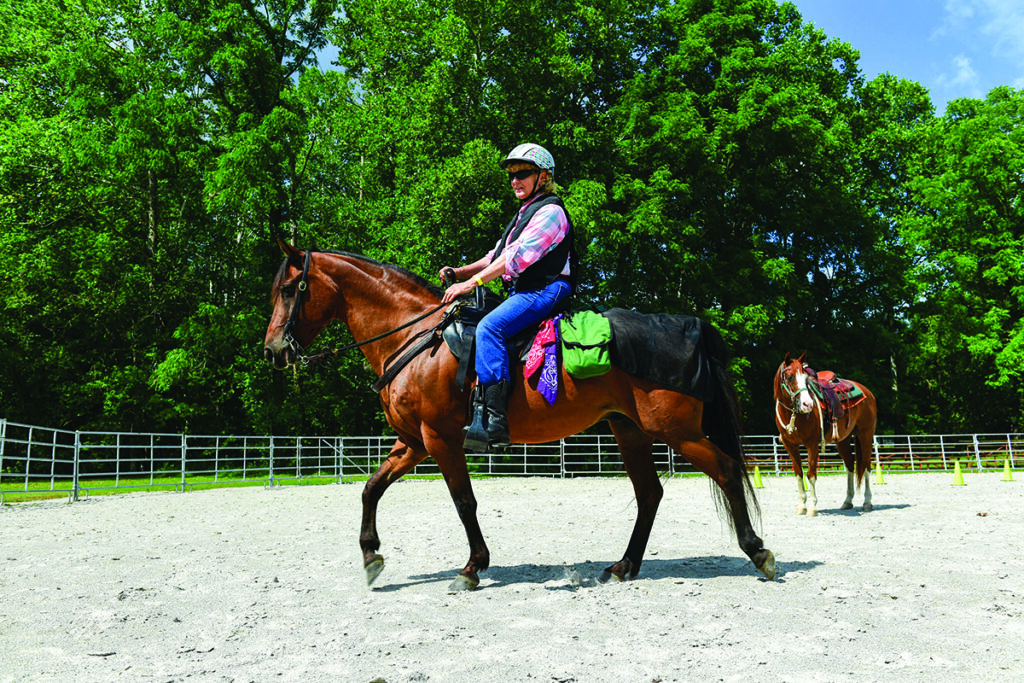
Preparing for a Ride
Davis advises that preparation ahead of a trail ride is the key to success and offers the following tips:
1. Prepare yourself and your horse, both mentally and physically. Teach your horse how to calmly deal with unexpected situations and desensitize him to things such as gun fire, vehicles and dogs. Make sure your horse is conditioned well and ready to handle the terrain. Be honest in assessing your physical capabilities and boldness.
2. Know the trails and take along detailed maps. Remember that cell service may be interrupted in some locations, so don’t rely on a connection. Instead, take a screenshot of web-based maps to store in your phone.
3. Understand the degree of difficulty of the trails on your route, and consider if all of the horses and riders in your group are ready. Note the length of a trail and the expected timeframe to complete. Plan safe places for breaks along the trail. Know north, south, east and west from your location.
4. Check the weather before you leave. Carry rain gear and layers for warmth.
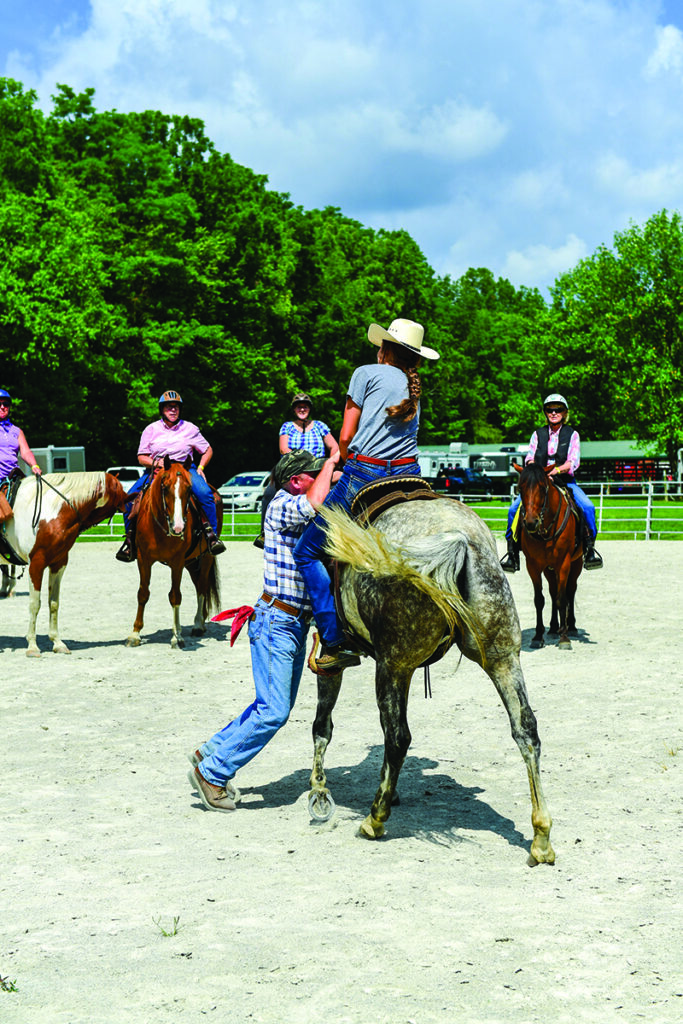
5. Pack smart. Prepare to be stuck on the trail. While some things can go in saddle bags on the horse, riders should consider a small gear bag that attaches to their leg, arm or back to hold necessities.
6. Pack vital medications and first-aid supplies, including a tourniquet, phone, water and snacks, maps, matches or road flares, a flashlight, a parachute cord, a knife or multi-tool, a jacket, hat and gloves, bandanas or towels, bug spray, and something that can be used as a weapon.
7. Attach an identification tag to your horse with your name, phone number, an emergency contact, and your planned route. Cross off completed trails to give rescuers an idea of where to start looking if your horse comes home without you.
8. Riders should wear a card with pertinent medical information and should always carry a cell or satellite phone on their person. That way if you part company with your horse, the phone is with you. Make sure it’s securely on you in case of a fall, since you don’t want it to go flying.

9. Know your human and equine riding companions. Know the experience level of all participants, any medical conditions, and be aware of any alcohol consumption. Also note if any of the horses tend to kick or bite.
10. Appoint a trail boss and a trail caboose who understand their duties. Encourage all riders to take the same route around obstacles and go one at a time. Do frequent head counts and discuss before taking on difficult terrain.
11. Leave word with someone at home or a note at your campsite of the planned route and approximate time away.
12. Learn CPR and basic first-aid.
13. Check all tack before your ride to make sure it is in good repair. Check that there’s nothing underneath the saddle pad or bottom of the saddle that will irritate your horse.
Getting Ready for Anything
Davis tells riders to be ready for the unthinkable, and says law enforcement are taught the acronym PEDA: perceive, evaluate, decide and act. This applies to encounters with humans acting suspiciously along the trail as well. He says that criminals have a plan, so you should too.
If you are riding and meet an individual acting strangely, Davis says you should be confident, sit tall in the saddle, and try to steer clear of that person, if possible. But you should also develop a plan in case of confrontation and look for escape options.
“Stay calm and think,” he advises. “Be nice, but be clever.”
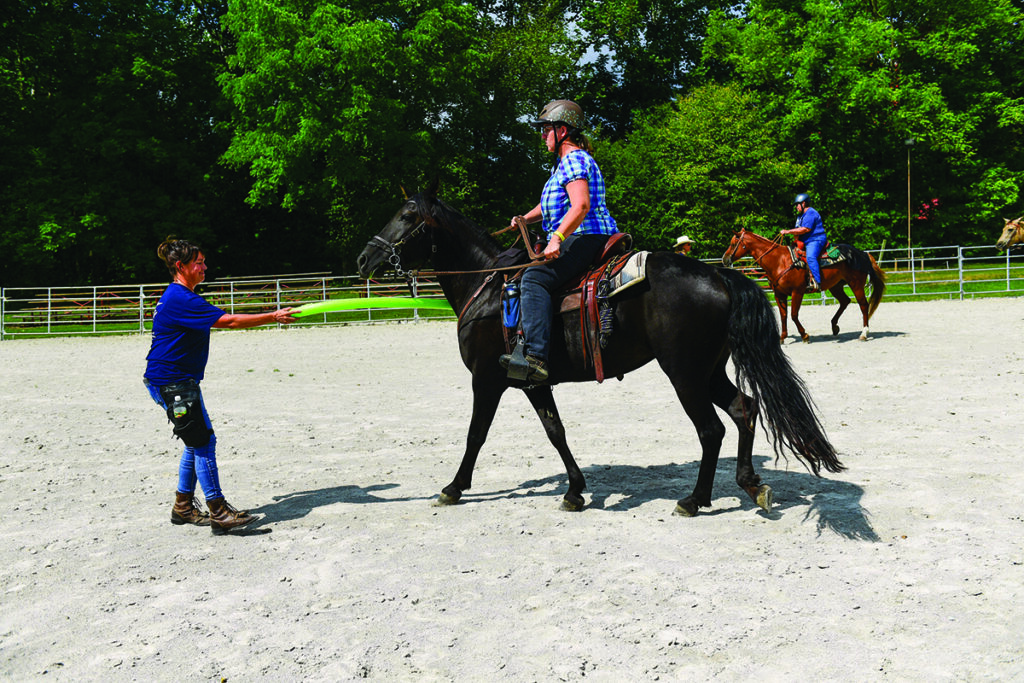
Wilann Beeson of Shirley, Ind., who participated in the equestrian self-defense course with her horse Chico, shares that she has put many of the techniques taught into action already.
“One of the first things I did after the class was to purchase a luggage tag and wrote my information on it,” she says. “That tag is attached to my horse when I ride. Now all of us who go out tell several different people where we are going and when we should arrive home.”
This article about equestrian self-defense tactics originally appeared in the August 2021 issue of Horse Illustrated magazine. Click here to subscribe!





